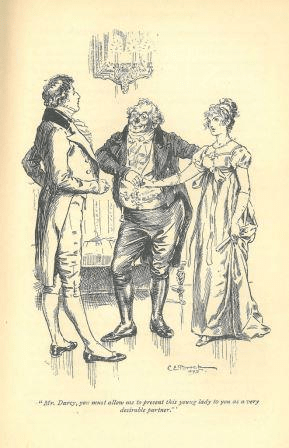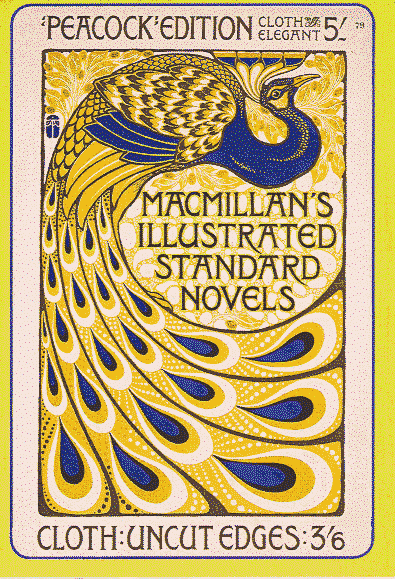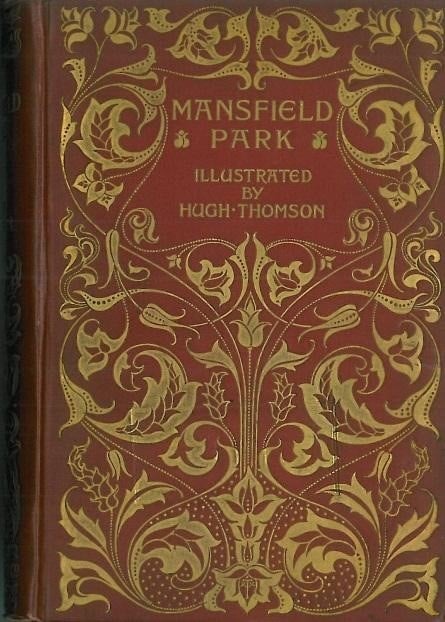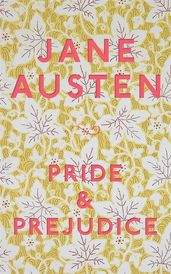Illustrating Jane Austen: the Macmillan history
Macmillan archivist Alysoun Saunders shares the history behind the Victorian illustrated editions of Jane Austen's novels, which were first published almost 120 years ago by Macmillan.

July 2017 marked the bicentenerary of the death of the much-loved author, Jane Austen. Here, Macmillan archivist Alysoun Saunders shares the history behind the Victorian illustrated editions of some of Jane Austen's novels, which were first published almost 120 years ago by Macmillan.
In the past two hundred years, Jane Austen’s descriptions of the characters in her novels have given illustrators, filmmakers and others a great opportunity to imagine the world that she created. Illustrated editions of her work have been published since soon after her death, but limitations in printing techniques and the cost meant that these were limited to one or two illustrations usually only as a frontispiece. However, the development of print technology and the emergence of illustration as a profession in the 1890s meant that books became more lavishly and well-illustrated.
In 1882 Macmillan launched the English Illustrated Magazine edited by Joseph Comyns Carr. It was meticulously designed with lettering reflecting the Aesthetic Movement. In 1884 Comyns Carr accepted for publication in the magazine a pen and ink drawing of the Parade at Bath in the 18th Century by a young man called Hugh Thomson (1860-1920) who was seeking work as an illustrator. Macmillan was quick to recognise his talent and contracted him to produce illustrations regularly for the magazine.
Hugh Thomson’s success in illustrating Mrs Gaskell’s Cranford led to him being asked to illustrate an edition of Pride and Prejudice for another publisher, George Allen. This was published in 1894 with a beautiful bound cover designed by him featuring a golden peacock and became known as the ‘Peacock Edition’ and was a huge success. This classic edition is celebrated in one of the benches in Basingstoke, and the Thomson illustrations for this edition have been widely reproduced and reissued recently by Macmillan Collector’s Library.

Two artists who also worked extensively for Macmillan in the 1890s were the brothers Charles and Henry Brock. Their work was influenced by the fashion of the late 18th and early 19th century, and by the work of Hugh Thomson. In the 1890s Macmillan published a series called ‘Illustrated Standard Novels’. Illustrators were commissioned to provide new drawings for classic titles, with Charles Brock commissioned to illustrate Pride and Prejudice.
Having had such success with Pride and Prejudice for George Allen, Hugh Thomson returned to Macmillan to complete illustrations for the remaining 5 novels by Jane Austen in the Illustrated Standard series of novels: Emma (1896), Sense & Sensibility (1896), Mansfield Park (1897), Northanger Abbey & Persuasion (1898). Forewords were also provided by the poet, Austin Dobson. It is these illustrations, by Thomson, reflecting Jane’s irony and social comment that have been widely reproduced ever since.

On 25th September 1896 Macmillan published a special presentation edition of titles in the Illustrated Standard series. The works of Jane Austen, T. L. Peacock and others were issued in a set bound in a beautiful distinctive gilt decorative red cloth especially designed by the Art Nouveau binder A. A. Turbayne (1866-1940) and using a Peacock motif on the end papers similar to that used by Hugh Thomson for Pride and Prejudice.
The following year Turbayne produced this poster to advertise the series:


To mark the bicentenary of Jane Austen’s death, and celebrate her legacy, celebrations took place throughout the UK. In Basingstoke, Hampshire, where Jane Austen spent much of her life a life-size statue has been unveiled outside the Willis Museum where she attended dances and a public art trail, Sitting with Jane, made up of 24 uniquely designed ‘BookBenches’ has been created in an around Basingstoke. Each bench has been uniquely designed and painted by a professional artist with their personal interpretation of a Jane Austen theme, including one which reflects the style of the Macmillan illustrated editions.
Pride and Prejudice
by Jane Austen
Jane Austen's best-loved novel is an unforgettable story about the inaccuracy of first impressions, the power of reason, and above all the strange dynamics of human relationships and emotions.
Part of the Macmillan Collector’s Library; this edition is illustrated by Hugh Thomson and features an afterword by author and critic, Henry Hitchings.
